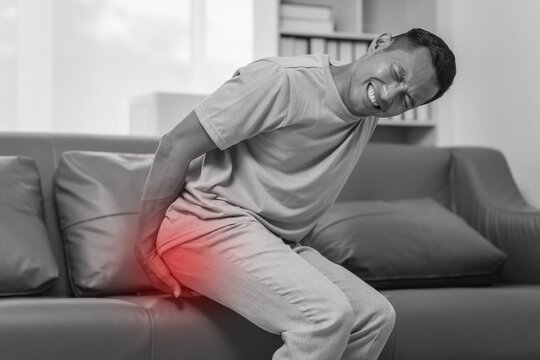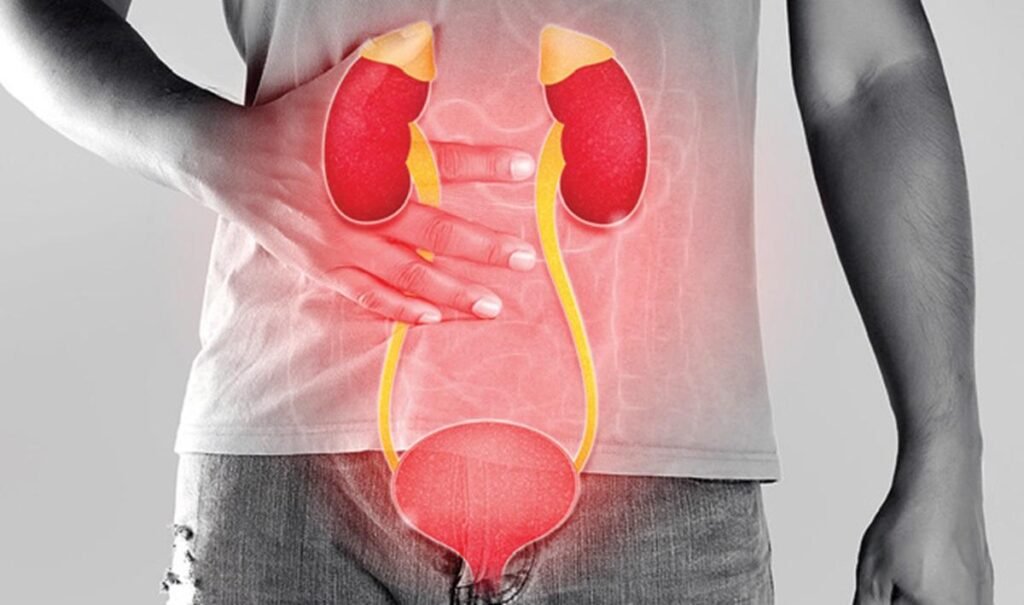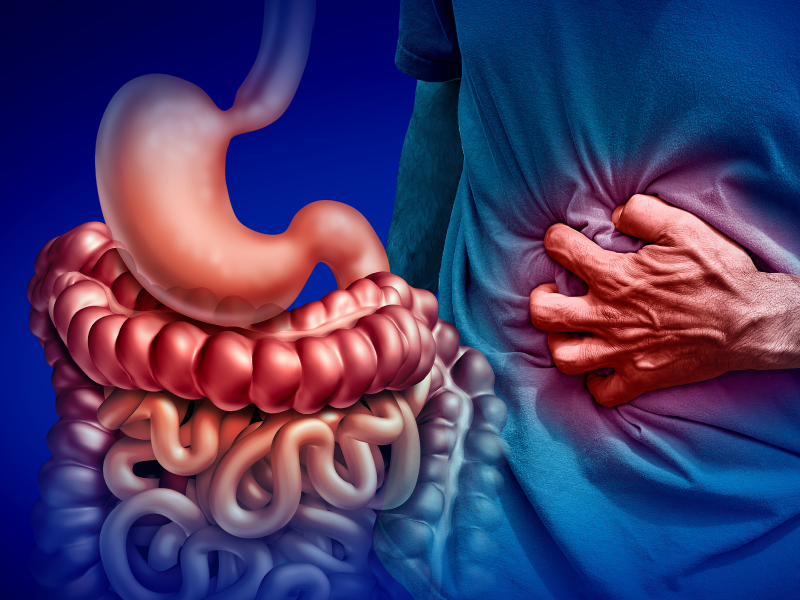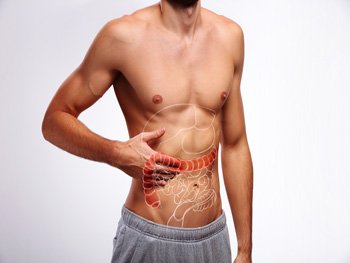Common Conditions treated
Hernias
A hernia occurs when a fatty tissue or internal organ presses through the immediate weak muscles or connective tissues (fascia). The most common types of hernias include inguinal (inner groin), femoral (outer groin), hiatal (upper stomach), umbilical (navel), and incisional (incision-caused).
Inguinal hernias are more prevalent in men than women wherein a particular part of the intestine, bladder, or a fatty tissue squeezes through the inner groin above the inner thigh. A femoral hernia protrudes in the groin too but in the outer part. It is not as common as an inguinal hernia and this is most likely to happen to older women. An umbilical hernia occurs when the intestine or fatty tissue forces through the abdomen near the belly button (navel).
A hiatal hernia is when the upper stomach pushes through the entrance of the diaphragm (hiatus) which is the part that divides the chest and the abdomen.
Incisional hernias only occur in people who have had abdominal surgery and this occurs more in overweight individuals or the elderly, wherein the intestine forces through the part of the abdomen that went through surgery.
Hernial symptoms include protruding bulges or swelling in the scrotum or groin, escalating pain and size of the lump, pain when lifting, dullness and ache as well as, bowel blockage or a sense of fullness.
Hernias may be diagnosed through physical examination as well as ultrasound or CT scanning and can only be corrected through surgery. Mr Ahmed will recommend the best type of surgical repair for you, which could be either open or keyhole (laparoscopic) hernia repair.

Haemorrhoids
Also known as piles, haemorrhoids occur due to pressure or strain on the veins in the rectum or anus; hence, it is like varicose veins located at the bottom. These are soft fleshy lumps just inside the back passage (anus). The pressure may be due to pregnancy, forced defaecation or excessive straining due to constipation, and lifting heavy objects.
Haemorrhoids can be of various types, particularly where the swelling vein is located:
Symptoms include, bright red bleeding though this is not usually painful, a feeling of lumps, itching, soreness, and tenderness in the anus.
Haemorrhoids are diagnosed either through a physical examination, digital rectal examination, proctoscopy or sigmoidoscopy. Whilst haemorrhoids can be treated conservatively with medication some time surgical intervention is necessary to improve the symptoms. Treatment options include rubber band ligation, electrocoagulation, sclerotherapy injection and sometimes surgery such as haemorrhoidectomy .

PROBLEMS RELATED TO THE BOWEL
Bowel disorders caused by chronic digestive tract inflammation are considered Inflammatory Bowel Diseases (IBD). The two major types include ulcerative colitis and Crohn’s disease.
Ulcerative colitis develops when the superficial lining of your rectum or large intestine gets sore or inflamed.
Crohn’s disease can affect your digestive tract lining from the mouth to anus. These conditions commonly affect younger people, although they can happen to people of any age. As yet there are no exact reasons for these disorders as presumed causes such as stress and poor diet are only found to aggravate symptoms rather than cause them. Recent research points to a few factors leading to IBD, such as genes, autoimmune disease and smoking, especially with regard to Crohn’s disease.
Inflammatory bowel disease (IBD) may include the following symptoms: a dwindling appetite, unintentional loss of weight, fatigue, diarrhoea with or without blood, pain and cramping in the abdomen, continuously changing bowel movements, and blood in the stool or a mucus discharge.
IBD can be diagnosed via a stool examination, blood tests, colonoscopy, as well as CT or MRI scanning. The initial treatment for IBD is usually medical treatment and surgery is recommended when medical treatment fails to improve the symptoms.

Pilonidal Sinus
Pilonidal sinus (PNS) is a condition which affects the skin in the natal cleft region. It presents as a persistent discharge through a tiny hole known as a sinus or more commonly as an abscess. It is triggered by the entrapment of hair which would cause infection/inflammation in that area. It usually occurs in men and young adults and is believed to be caused by a combination of several factors combined which include puberty-led hormonal changes, sitting too much all day, hair growth, and frequent friction of clothes.
It is easy to diagnose this condition since infected PNS can be identified immediately by the naked eye. Treatments include antibiotics especially when it is infected. If it forms an abscess then it will require surgery (incision and drainage). When PNS is a recurring condition, a definitive procedure maybe necessary to excise the track and cavity.

Gall Bladder issues
Gall bladder diseases include gallstones, choledocholithiasis, acalculous gallbladder disease, biliary dyskinesia, sclerosing cholangitis, gallbladder cancer and gallbladder polyps. Gallstones present as biliary colic, cholecystitis or in some cases as acute pancreatitis.
The gallbladder normally stores bile and passes this on to the small intestine. However, when gallstones block the entryway, the bile is forced to build up, irritating the gall bladder walls, and then causing inflammation (cholecystitis). This then leads to acute symptoms such as fever, pain in the upper abdomen, nausea, jaundice, and vomiting. Chronic abdominal pain is part of the symptoms especially after having heavy meals.
For an accurate diagnosis, Mr Ahmed may perform one or a combination of the following: take your medical history, undertake a clinical or physical examination, request an ultrasound, CT, or MRI scan, or and endoscopic retrograde cholangiopancreatography (ERCP) or HIDA scan.
Definitive treatment for a symptomatic gallbladder due to gallstone is surgery via a keyhole approach (laparoscopic cholecystectomy).

Diverticular Disease
Diverticular disease is very common condition people over the age of 60 years. It is due to wear and tear in the bowel. Diverticulosis occurs when one or more colon wall pockets or bulges (diverticula) emerge. Diverticulitis happens when the diverticula is inflamed and infected.
Diverticulosis is generally asymptomatic however it may lead to diverticulitis and develop some symptoms. There are not yet proven reasons for the occurrence of diverticulosis, but scientists believe that it is due to an inadequate intake of fiber resulting in constipation. Constipation strains the walls of the colon leading to the pockets or bulges.
Symptoms of diverticular disease may include mild abdominal cramps, tenderness in the left side of the abdomen, rectal bleeding, constipation, diarrhoea, bloating, or swelling. Diverticulitis sometimes is also associated with a fever, chills, lower abdominal cramps, nausea, vomiting, and tenderness, pain, or sensitivity in left side of the abdomen.
Diverticular disease may be diagnosed through a blood test, CT scan, sigmoidoscopy, or colonoscopy. For treatment, your doctor may recommend that you change your diet, take antibiotics, or undergo surgery especially when a complication related to diverticular disease develops.

Crohn's Disease
Crohn’s disease is one of the types of inflammatory bowel disease (IBD) wherein the digestive tracts, both small and large intestines, are inflamed and irritated. This condition commonly affects younger people, although it does happen to persons of any age.
A few factors lead to Crohn’s disease, such as genes, autoimmune disease, or smoking. Symptoms usually include chronic diarrhea, fever, feeling that you’re full, unexplained loss of appetite and weight, abdominal pain, rectal bleeding, anal fissures, or fistulas.
Crohn’s disease may be diagnosed through a blood test, stool test, colonoscopy, CT scan, or upper gastrointestinal (GI) endoscopy. Treatments may include medical treatment and surgery.

Colitis
Colitis is one of the types of inflammatory bowel disease (IBD) which mainly involves the rectum and colon. Symptoms usually include chronic diarrhea, fever, feeling that you’re full, unexplained loss of appetite and weight, pain in the abdomen, or rectal bleeding.
Initial treatment is generally medical, but surgery is highly recommended when an alternate solution is needed.

Fissure
Fissures in the anal canal or anus can be caused by various kinds of trauma, such as persistent diarrhoea, straining during defecating, long-term constipation, anal stretching, poor habits of bowel movement as well as extremely tight anal sphincter muscles, etc.
Symptoms of an anal fissure include pain during defaecation or opening the bowel. It may also be associated with bleeding, discharge or irritation.
An anal fissure is usually diagnosed through a clinical examination. Treatments vary and, in some instances, surgery is considered. Conservative treatments are however considered first, such as stool softeners, dietary adjustments, or local medications. Other treatments may include a Botox injection or surgery.
Initial treatment is generally medical, but surgery is highly recommended when an alternate solution is needed.

Fistula
A fistula develops when the small glands within the anus, which produce mucus, get clogged and infected, resulting in an abscess, which would then turn into a fistula. The condition is called an anal fistula, which serves as a small tunnel to connect the infected area to the skin around the anus.
An anal fistula can also be caused by various underlying medical conditions, such as Crohn’s disease, tuberculosis, cancer, diverticulitis, and sexually transmitted infections.
Symptoms of the disease include painful and swollen skin around the anus, pain with defaecation, bleeding, recurring anal abscesses, fever, fatigue, discharge of pus or blood from the anus with a bloody odour, and irritation around the anal skin due to drainage.
The diagnosis depends on how visible the fistula is. When it is not visible enough, Mr Ahmed may perform an examination under general anaesthesia or request an MRI scan. Mr Ahmed would typically recommend surgery for treatment.

Mr Ahmed Is available for virtual And face-to-face consultations at The Three Shires, The Avenue, Northampton.
Lead a healthy life!
Our Process
We believe in greater vision, accuracy, and control to keep you in good health.

Registeration
Make a phone call or schedule to meet with Mr Ahmed or call THS.

Diagnostic
Tests are conducted after a clinical assessment or via a consultation over the phone for diagnosis.

Treatment
We value your needs and preferences in our treatment.
